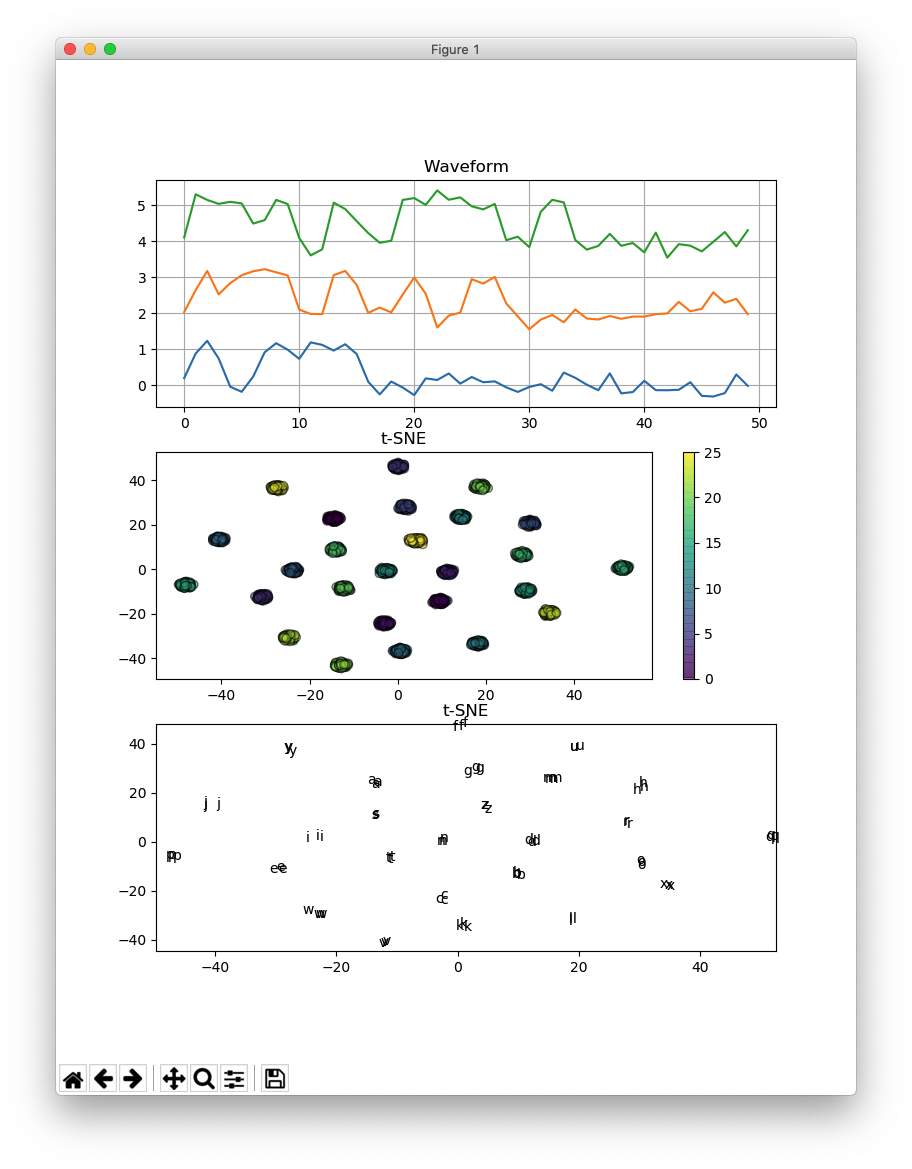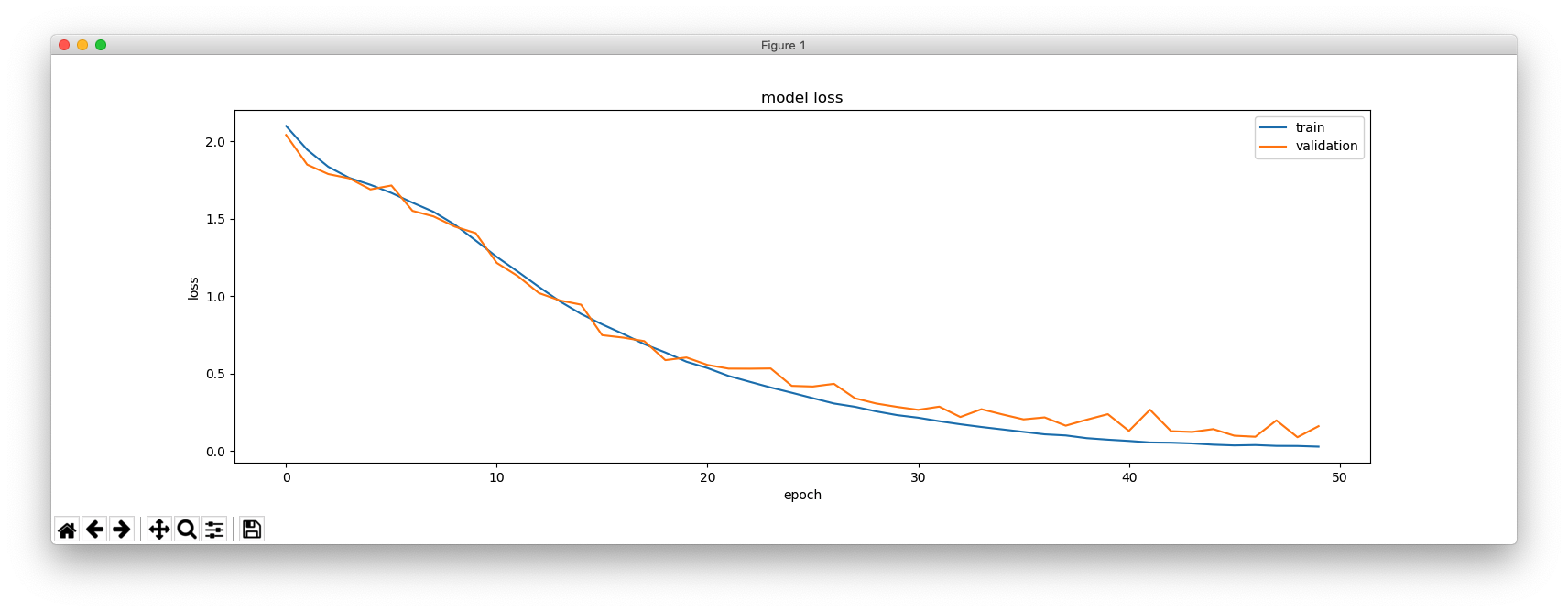
もしも、あなたが現実世界により対応する入力シーケンスを用いることを好むのであれば、1つの方法は、以下のようにトレーニングを行うことです。
a, 101110
aa, 101110 101110
aal, 101110 101110 1011101010
aalii, 101110 101110 1011101010 1010 1010
(many lines deleted)
zythia, 111011101010 11101011101110 1110 10101010 1010 101110
zythum, 111011101010 11101011101110 1110 10101010 10101110 11101110
zyzomys, 111011101010 11101011101110 111011101010 111011101110 11101110 11101011101110 101010
zyzzogeton, 111011101010 11101011101110 111011101010 111011101010 111011101110 1110111010 10 1110 111011101110 111010
ここでは、文字間のスペースシングは完璧に検出され、空白文字で表されていると仮定しています。
_________________________________________________________________
Layer (type) Output Shape Param #
=================================================================
lstm_1 (LSTM) (None, 128) 67584
_________________________________________________________________
repeat_vector_1 (RepeatVecto (None, 4, 128) 0
_________________________________________________________________
lstm_2 (LSTM) (None, 4, 128) 131584
_________________________________________________________________
time_distributed_1 (TimeDist (None, 4, 27) 3483
=================================================================
Total params: 202,651
Trainable params: 202,651
Non-trainable params: 0
_________________________________________________________________
Train on 4894 samples, validate on 100 samples
10111011101110 10101110 111010111010 1110101110 juck juck
1110101010 10101110 1011101010 1011101010 bull bull
101110111010 1010 1011101010 11101011101110 pily pily
1011101010 10101110 10 101010 lues laes
1110111010 111011101110 1011101110 111010 gown gown
10101010 101110 10101110 1011101010 haul haul
1110 111011101110 1010 1011101010 toil toil

これは、hidden_size = 256 の場合です。

これは、hidden_size = 64 の場合です。
_________________________________________________________________
Layer (type) Output Shape Param #
=================================================================
lstm_1 (LSTM) (None, 256) 266240
_________________________________________________________________
repeat_vector_1 (RepeatVecto (None, 4, 256) 0
_________________________________________________________________
lstm_2 (LSTM) (None, 4, 256) 525312
_________________________________________________________________
time_distributed_1 (TimeDist (None, 4, 27) 6939
=================================================================
Total params: 798,491
Trainable params: 798,491
Non-trainable params: 0
_________________________________________________________________
Train on 4894 samples, validate on 100 samples
_________________________________________________________________
Layer (type) Output Shape Param #
=================================================================
lstm_1 (LSTM) (None, 64) 17408
_________________________________________________________________
repeat_vector_1 (RepeatVecto (None, 4, 64) 0
_________________________________________________________________
lstm_2 (LSTM) (None, 4, 64) 33024
_________________________________________________________________
time_distributed_1 (TimeDist (None, 4, 27) 1755
=================================================================
Total params: 52,187
Trainable params: 52,187
Non-trainable params: 0
_________________________________________________________________
Train on 4894 samples, validate on 100 samples
from keras.models import Sequential
from keras import layers
import numpy as np
import matplotlib.pyplot as plt
class CharTable(object):
def __init__(self, chars):
self.chars = sorted(set(chars))
self.char_indices = dict((c, i) for i, c in enumerate(self.chars))
self.indices_char = dict((i, c) for i, c in enumerate(self.chars))
def encode(self, token, num_rows):
x = np.zeros((num_rows, len(self.chars)))
for i, c in enumerate(token):
x[i, self.char_indices] = 1
return x
def decode(self, x, calc_argmax=True):
if calc_argmax:
x = [x.argmax(axis=-1)]
return ''.join(self.indices_char[int(v)] for v in x)
def main():
word_len = 4
max_len_x = 15 * word_len + (word_len - 1)
max_len_y = word_len
input_list = []
output_list = []
fin = 'words_morse10.txt'
with open(fin, 'r') as file:
for line in file.read().splitlines():
mylist = line.split(", ")
[word, morse] = mylist
morse = morse + ' ' * (max_len_x - len(morse))
if len(word) == word_len:
input_list.append(morse)
output_list.append(word)
chars_in = '10 '
chars_out = 'abcdefghijklmnopqrstuvwxyz '
ctable_in = CharTable(chars_in)
ctable_out = CharTable(chars_out)
x = np.zeros((len(input_list), max_len_x, len(chars_in)))
y = np.zeros((len(output_list), max_len_y, len(chars_out)))
for i, token in enumerate(input_list):
x[i] = ctable_in.encode(token, max_len_x)
for i, token in enumerate(output_list):
y[i] = ctable_out.encode(token, max_len_y)
indices = np.arange(len(y))
np.random.shuffle(indices)
x = x[indices]
y = y[indices]
m = len(x) - 100
(x_train, x_val) = x[:m], x[m:]
(y_train, y_val) = y[:m], y[m:]
hidden_size = 128
batch_size = 128
nlayers = 1
epochs = 150
model = Sequential()
model.add(layers.LSTM(hidden_size, input_shape=(max_len_x, len(chars_in))))
model.add(layers.RepeatVector(word_len))
for _ in range(nlayers):
model.add(layers.LSTM(hidden_size, return_sequences=True))
model.add(layers.TimeDistributed(layers.Dense(len(chars_out), activation='softmax')))
model.compile(loss='categorical_crossentropy',
optimizer='adam',
metrics=['accuracy'])
model.summary()
hist = model.fit(x_train, y_train, batch_size=batch_size,
epochs=epochs, verbose=2, validation_data=(x_val, y_val))
predict = model.predict_classes(x_val)
for i in range(len(x_val)):
print("".join([ctable_in.decode(code) for code in x_val[i]]),
"".join([ctable_out.decode(code) for code in y_val[i]]), end=" ")
for j in range(word_len):
print(ctable_out.indices_char[predict[i][j]], end="")
print()
plt.figure(figsize=(16, 5))
plt.subplot(121)
plt.plot(hist.history['acc'])
plt.plot(hist.history['val_acc'])
plt.title('model accuracy')
plt.ylabel('accuracy')
plt.xlabel('epoch')
plt.legend(['train', 'validation'], loc='upper left')
plt.subplot(122)
plt.plot(hist.history['loss'])
plt.plot(hist.history['val_loss'])
plt.title('model loss')
plt.ylabel('loss')
plt.xlabel('epoch')
plt.legend(['train', 'validation'], loc='upper right')
plt.show()
main()
import numpy as np
def morse_encode(word):
return " ".join([morse_dict[i]for i in " ".join(word).split()])
def data_gen():
fin = 'words_alpha.txt'
with open(fin, 'r') as file:
for word in file.read().lower().splitlines():
print(word, morse_encode(word), sep=", ")
return
alphabet = list("abcdefghijklmnopqrstuvwxyz")
# values = ['.-', '-...', '-.-.', '-..', '.', '..-.', '--.', '....', '..', '.---', '-.-',
# '.-..', '--', '-.', '---', '.--.', '--.-',
# '.-.', '...', '-', '..-', '...-', '.--', '-..-', '-.--', '--..']
values = ['101110', '1110101010', '111010111010', '11101010', '10', '1010111010',
'1110111010', '10101010', '1010', '10111011101110', '1110101110',
'1011101010', '11101110', '111010', '111011101110', '101110111010',
'11101110101110', '10111010', '101010', '1110', '10101110', '1010101110',
'1011101110', '111010101110', '11101011101110', '111011101010']
morse_dict = dict(zip(alphabet, values))
data_gen()





















